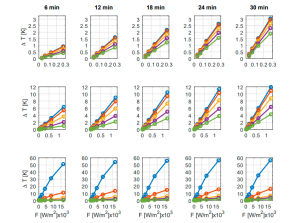This article focuses on the subject of 5G radiation, a non-ionizing form of electromagnetic radiation. Since 5G radiation is small, it doesn't have the capacity to break chemical bonds in biological tissues or cause any modifications to cells. It isn't known whether 5G radiation can affect the risk of developing skin cancer, and no evidence has been discovered to suggest that it can cause other disease.
High-frequency millimeter wave radiation
High-frequency millimeter wave radiation from mobile phones and wireless networks may cause health effects to humans. There are several ways in which this radiation could cause harm. In some cases, the radiation can cause damage to the person's DNA. In other instances the radiation may cause harm to other parts in the human body including the brain.
Recent research has shown that 5G technology can cause thermal heating in tissues. In the aftermath, scientists from International Council on Non-Ionizing Radiation Protection (ICNIRP) has asked for a review of the existing safety standards for biological and thermal radiation. The current exposure standards don't protect people from excessive heating when exposed to millimeter wave pulses.
Skin cancer risk
There is no definite answer to the question of whether the 5G radiation can cause skin cancer. It is however believed that 5G RF-EMFs behave much like high-LET ionizing radiations. This means that they can produce high levels of free radicals in the skin. The FCC has not yet issued any specific guidelines on the dangers of 5G technology. Consequently, the debate continues.
Although there has been a variety of studies regarding the impact of radio waves with higher frequencies on human health however, their research has been small in extent. However, there is concern over the effects of millimeter-wavelength exposure on oxidative stress and gene expression. These effects may extend to the skin and various organs, including the brain.
Impact on other diseases
A new generation of wireless technology, 5G, is rapidly growing in popularity however, scientists are warning about its potential health risks. The technology will dramatically increase the quantity of electromagnetic radiation that is found in our environment. This is a problem that has caused debate in several countries including Switzerland. In September 2017, 390 scientists and doctors were in favor of a moratorium on 5G deployment. This motion was not heeded by the European Commission, which is in charge of controlling the use of 5G technology.

Therefore there is a need for more research to determine the health impacts of 5G. In the meantime research has shown that 5G isn't causing the same effects in humans as radiofrequency from the older mobile networks. Also, it doesn't spread the new coronavirus type. Additionally it does not make people more susceptible to viral infections.
5g towers radiation of exposure
Monitoring exposure to radiation from 5G is a vital aspect in making sure that 5G networks are safe. There are two methods to gauge exposure. One is to measure the RF power absorbed by human tissues. The other is measuring the amount of radiofrequency energy emitted by an object. Radiofrequency energy (RF) refers to an electromagnetic field of energy that is emitted through radio transmitters.
Within the United States, the FCC has set a limit on the energy density of mobile devices running 5G. The tests are able to measure power density at the distance of only a few inches. it is the FCC does not require measurements of every beam. However the power density of each beam can be determined by computer simulation. The worst case scenario is then determined according to the design of each beam.
5g radiation symptoms has its limitations
There's been plenty of discussion over whether 5G radiation will affect the health of humans. In the case of 5G, for instance. Swiss authorities, for example, has produced an assessment that concludes that 5G technology does not cause health effects in the short term, but there are no studies that have demonstrated long-term effects. However, this report also has a variety of issues, including biased reports.
The strength and frequency of the radio waves that carry energy will depend on the frequency. 5g radiation that is carried by a millimetre wave will be the same as the frequency of radio waves currently however, they're less visible and are better suited for high-density environments as they won't be blocked by glass or walls. Urban areas with high density would require a high number of smaller, low-power locations, while suburban areas would benefit from 5G networks operating at lower frequency.
